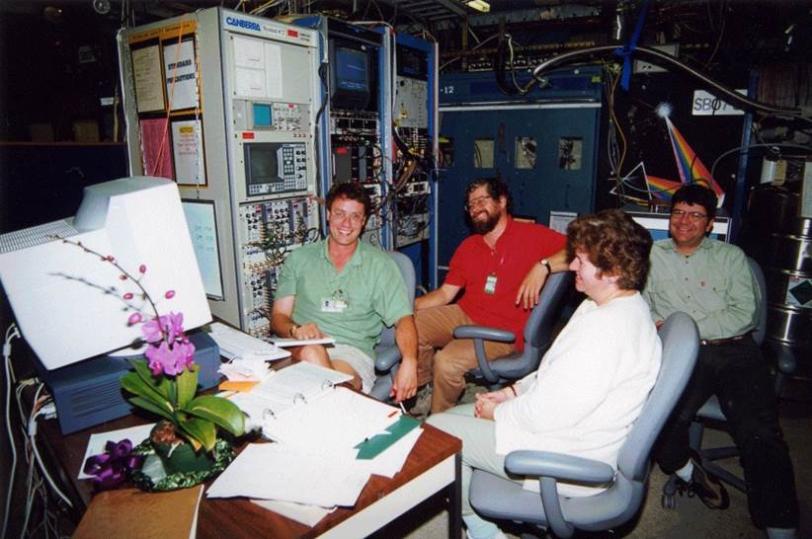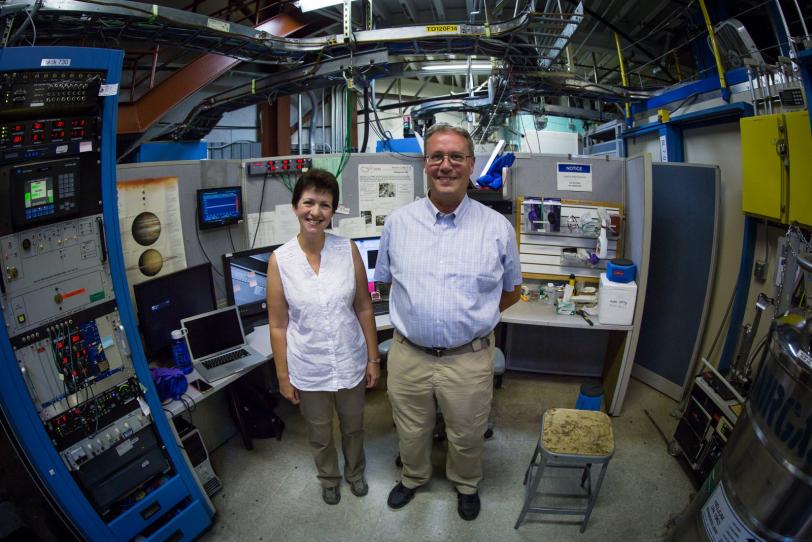X-ray Duo's Research Helps Launch Human Trial for Treatment of Arsenic Poisoning
Former SLAC Scientists Still Conduct Experiments at Lab’s SSRL
Graham George and Ingrid Pickering, a husband and wife X-ray research team, have worked for decades to understand how contaminants in water and soil are taken up by the body and affect human health. Much of that research has taken place at the Stanford Synchrotron Radiation Lightsource (SSRL), a DOE Office of Science User Facility at SLAC National Accelerator Laboratory, where both are former staff scientists.
Now George and Pickering are co-leading a new study in Bangladesh that is testing whether giving people selenium supplements can protect them from arsenic poisoning caused by naturally contaminated drinking water, which affects more than 100 million people worldwide and can lead to cancer, liver disease and other severe health problems.
The clinical trial, which runs through July 2016, is paid for by the Canadian federal government and is sponsored by the University of Saskatchewan, where Pickering and George have been professors since 2003.
Fighting Poison with Poison?
The idea for the treatment dates back to the 1930s, when a scientist discovered that rats fed wheat containing enough selenium to kill them could actually survive if they were also given arsenic-contaminated water.
Decades later, Jürgen Gailer, a scientist at the University of Calgary in Canada who was conducting related research on this biological oddity, asked Pickering and George if they could use X-ray techniques to find out how combining these two toxins could seemingly cancel out their dangerous effects in mammals.
“We discovered the molecule responsible for this effect,” George said.
In a series of X-ray experiments that began over a decade ago at SSRL, George and Pickering identified a compound that forms in rabbits injected with both arsenic and selenium. When the rabbits excreted this compound it apparently removed the toxins.

The study, published in 2000, also concluded that people exposed to arsenic-contaminated water might get some protection by increasing their selenium intake, and it offered possible clues to why arsenic poisoning can be carcinogenic.
In the current trial in Bangladesh, one group of men is receiving sodium selenite, a compound that could potentially help to cleanse arsenic from their systems, and another group of men is receiving a placebo. This trial provides stricter controls on how the drugs are administered than a previous trial that was not successful.
Brain Diseases, Using Plants for Cleanup Among Latest Projects
“Our focus has been on understanding the roles of metals in biology,” George said, as many proteins that carry out important functions in biology contain metallic elements. “We want to understand the detailed structure of metals in proteins’ active sites, and see how they’re localized in tissues.”
In addition to their ongoing arsenic and selenium work, the couple also are studying how plants can potentially be used to take contaminants out of the soil that are potentially hazardous to human health.
“Wouldn’t it be great if we could plant a crop of plants that can harvest contaminants into the roots and take them away?” Pickering said.
Another thread of their research uses X-ray experiments to explore the roles metal ions, and in particular copper ions, play in diseases related to misfolded proteins, such as Alzheimer’s and prion diseases – mad cow disease is one example.
George, who first visited SSRL in 1983, is a pioneer in biological studies using X-ray absorption spectroscopy to explore the atomic structure and arrangement of electrons in samples. This technique is also applicable to other fields, like chemistry and materials science. Pickering has focused her research on metals in the environment and how they impact biology and human health. She leads a synchrotron training program at her university for graduate students and postdoctoral researchers pursuing health-related research.
“We end up on each other’s papers a lot,” George says, because of natural overlaps in their research.
A Long History at SSRL
Both originally from the United Kingdom, the couple met in New Jersey while working as researchers at Exxon and have been married for 23 years. They worked as staff scientists at SLAC’s SSRL from 1992 to 2003, and still come to SLAC to conduct experiments at SSRL.
During their recent six-month research sabbatical at SSRL, they conducted several X-ray experiments related to their biological research.
“We’ve been doing something we haven’t done in a long time, which is work on an X-ray beamline together,” said George, as work and family schedules have complicated their experimental time.
They also worked on software development to update an X-ray data analysis tool that George created decades ago, called EXAFSPAK, that is in use at synchrotrons around the globe. George said his brother, Martin, and Allyson Aranda, both SSRL scientific programmers, are also working on this ongoing update, which will add new features and make the software easier to use.
Future X-ray Work
Graham George said he is excited about the new research possibilities using X-ray lasers like SLAC’s Linac Coherent Light Source, which has X-ray pulses a billion times brighter than synchrotron light. “LCLS is going to change everything for many people in science. It makes possible the ‘wow’ kind of science,” he said, adding that synchrotrons like SSRL will continue to be the workhorses in X-ray research.
The couple said they will continue to be drawn to SSRL for their own work.
“It’s a ‘can-do’ place. That translates to a really great user experience,” Pickering said. “People here are really keen to make sure your experiment is successful. That really does count for a lot.”
George added, “It doesn’t just have to do with the quality of the X-ray beams. It also has to do with good ideas and a good fundamental approach, and the systematic, careful nature of the people who work here.”
For questions or comments, contact the SLAC Office of Communications at communications@slac.stanford.edu.
SLAC is a multi-program laboratory exploring frontier questions in photon science, astrophysics, particle physics and accelerator research. Located in Menlo Park, Calif., SLAC is operated by Stanford University for the U.S. Department of Energy's Office of Science.
SLAC National Accelerator Laboratory is supported by the Office of Science of the U.S. Department of Energy. The Office of Science is the single largest supporter of basic research in the physical sciences in the United States, and is working to address some of the most pressing challenges of our time. For more information, please visit science.energy.gov.





